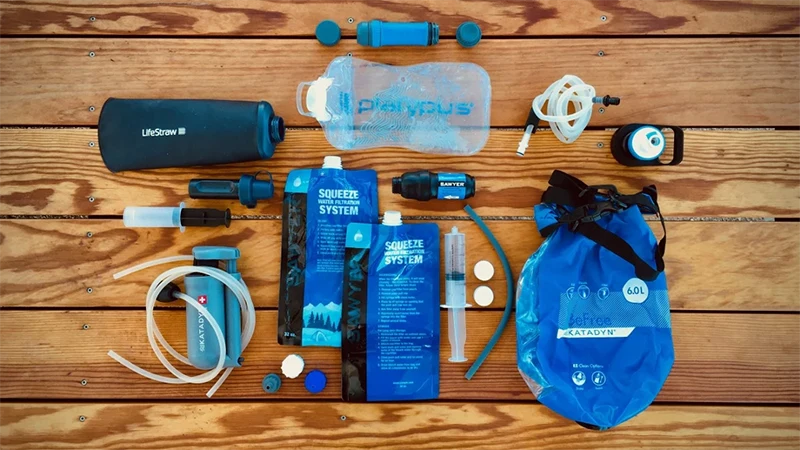

How Effective are Backflushing and Storage Practices for Backcountry Squeeze Filters Using Hollow-Fiber Membrane Technology?
We provide data that evaluates backflushing and storage in maintaining flow rates of the Platypus Quickdraw, Sawyer Squeeze, and Katadyn Befree hollow-fiber membrane squeeze filters.
Introduction
In this test report, I investigate the effectiveness of backflushing and storage protocols to evaluate the relative differences in maintaining the performance of the Platypus Quickdraw, Sawyer Squeeze, and Katadyn Befree hollow-fiber membrane filters.
A variety of tests and protocols were performed, including filtration of dirty water with a moderate level of turbidity and backflushing efficacy. In addition, I look at how integrating a long-term storage protocol using citric acid and chlorine dioxide might affect filter lifespan. Finally, several filters were subjected to a six-month field study and evaluated at the end based on backflushing and storage protocols used to maintain their flow rates.
Because flow rate is also proportional to the transmembrane pressure of water across the hollow-fiber membrane, the rate of water flow through a squeeze filter is highly variable and depends on how hard a user squeezes the water bottle. More squeeze pressure equates to a higher flow rate. Because of this, evaluating maximum flow rates through a squeeze filter is challenging and would require a constant-pressure delivery of water that mimics the pressure exerted by a user’s hands squeezing the bottle attached to the filter. Therefore, to maintain a controllable and repeatable test, flow rates here are measured by passive flow provided by the gravitational forces of the hydrostatic head above the filter in the absence of a vacuum in the feed bottle. We use the technique presented previously by Jon Fong to determine the current state of a filter’s capacity, i.e., the effective filtration media surface area available (and not clogged), which is directly proportional to the flow rate of water through a hollow-fiber membrane filter.
From the Squad
Campfire conversations with our community, from Squad Members and Ambassadors to Brand Partners and the Sawyer team.

















